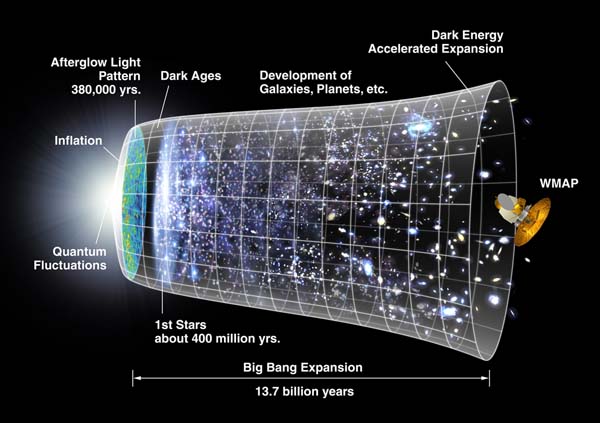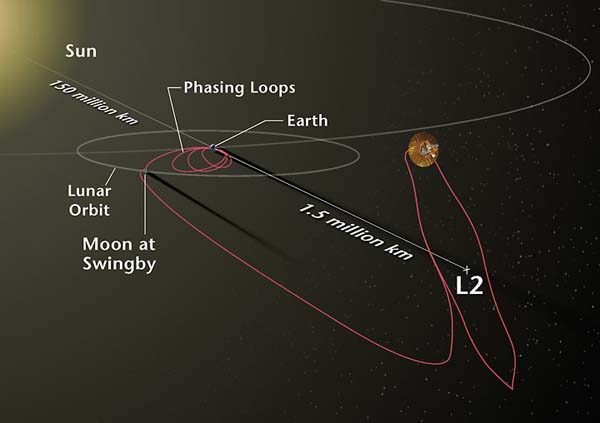Cornucopia of Data
With the chill of fall in the air it’s that time of year when we’re reminded of turning leaves, football, and the fact that the known universe looks like a Thanksgiving cornucopia.Cosmologists have come up with this graphic to convey how the universe formed, expanded, cooled, and, more recently (on…
With the chill of fall in the air it's that time of year when we're reminded of turning leaves, football, and the fact that the known universe looks like a Thanksgiving cornucopia.

Cosmologists have come up with this graphic to convey how the universe formed, expanded, cooled, and, more recently (on a cosmic time scale), began to accelerate its expansion due to a mysterious and theoretical force called dark energy.
One tool that has been crucial in understanding this evolution is the space-based Wilkinson Microwave Anisotropy Probe (WMAP), named for David Wilkinson, a Princeton University cosmologist and founding team member who died in 2002, a year after the observatory was launched into space. From a sun-Earth gravitational balancing point called L2, WMAP has spent nine years scanning the sky, and has just concluded its mission.

WMAP measured subtle temperature differences in the cosmic microwave background that continues to ring throughout the universe like the fading crash of gong. In this case the gong strike was The Big Bang. WMAP has given astronomers their best look at this remnant radiation, considered the oldest "light" in the universe (it can't be seen in the visible portion of the spectrum), which was first detected in 1992 by NASA's Cosmic Background Explorer spacecraft.
WMAP collected its final data on August 20, 2010. On September 8, the satellite fired its thrusters, left its working orbit, and entered into a permanent parking orbit around the sun.
Read more about WMAP's accomplishments here.

Cosmologists have come up with this graphic to convey how the universe formed, expanded, cooled, and, more recently (on a cosmic time scale), began to accelerate its expansion due to a mysterious and theoretical force called dark energy.
One tool that has been crucial in understanding this evolution is the space-based Wilkinson Microwave Anisotropy Probe (WMAP), named for David Wilkinson, a Princeton University cosmologist and founding team member who died in 2002, a year after the observatory was launched into space. From a sun-Earth gravitational balancing point called L2, WMAP has spent nine years scanning the sky, and has just concluded its mission.

WMAP measured subtle temperature differences in the cosmic microwave background that continues to ring throughout the universe like the fading crash of gong. In this case the gong strike was The Big Bang. WMAP has given astronomers their best look at this remnant radiation, considered the oldest "light" in the universe (it can't be seen in the visible portion of the spectrum), which was first detected in 1992 by NASA's Cosmic Background Explorer spacecraft.
WMAP collected its final data on August 20, 2010. On September 8, the satellite fired its thrusters, left its working orbit, and entered into a permanent parking orbit around the sun.
Read more about WMAP's accomplishments here.